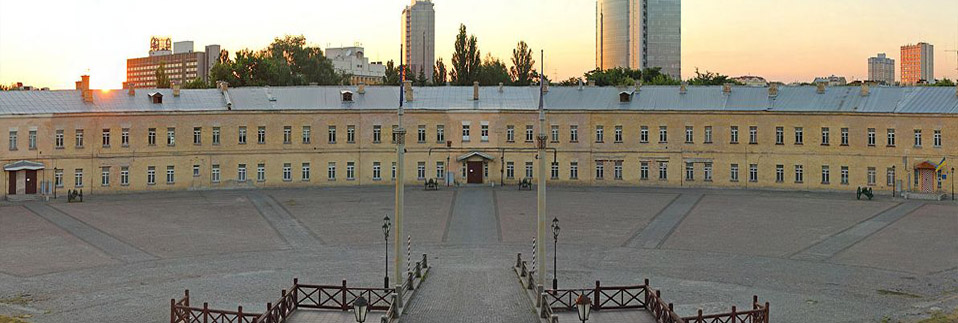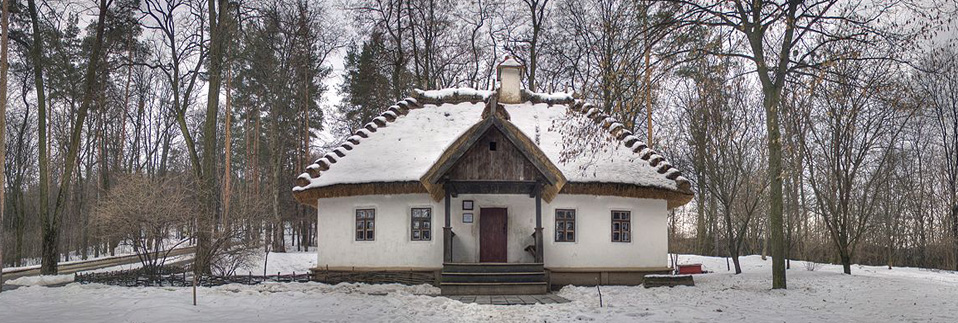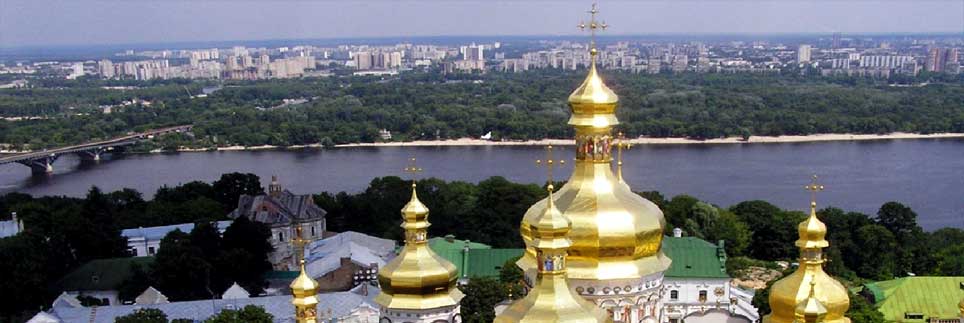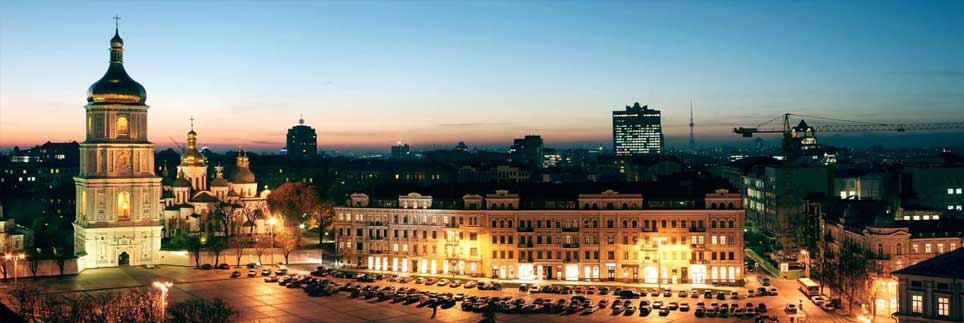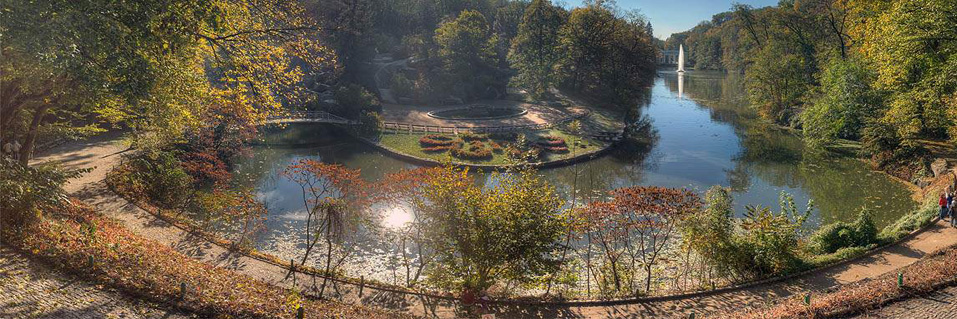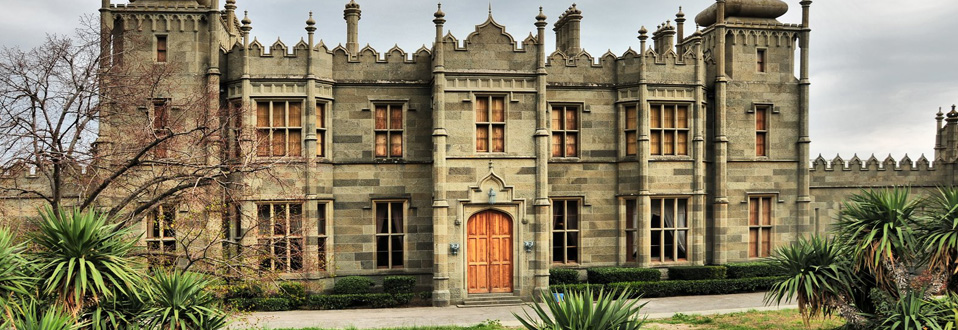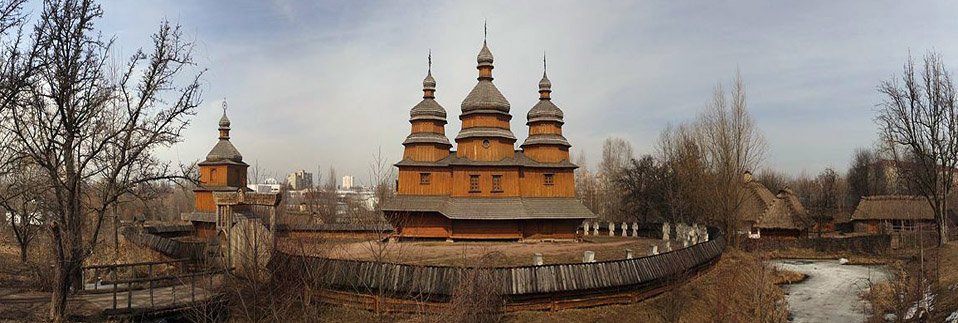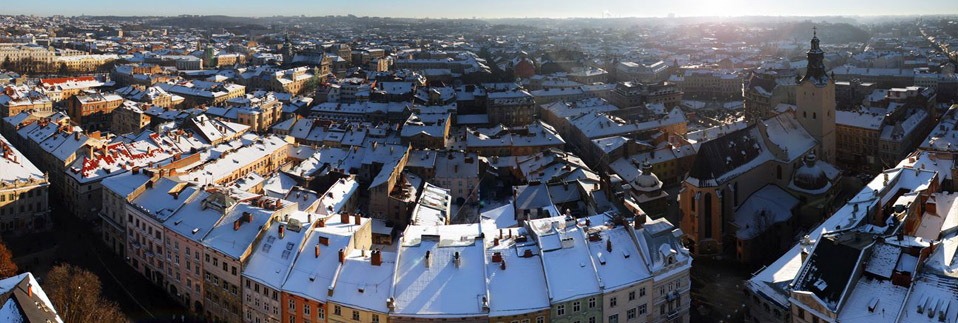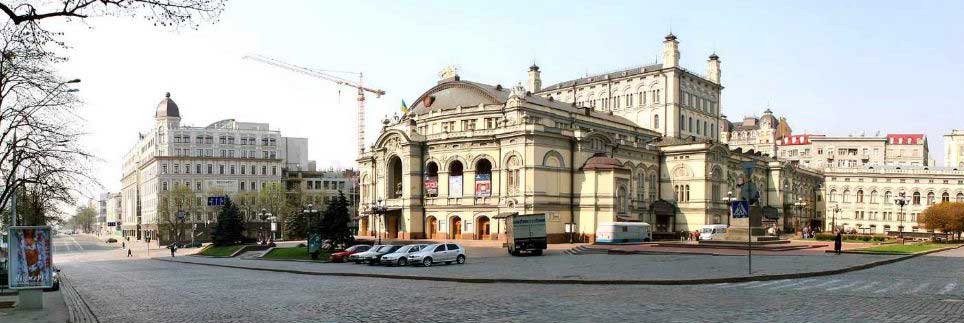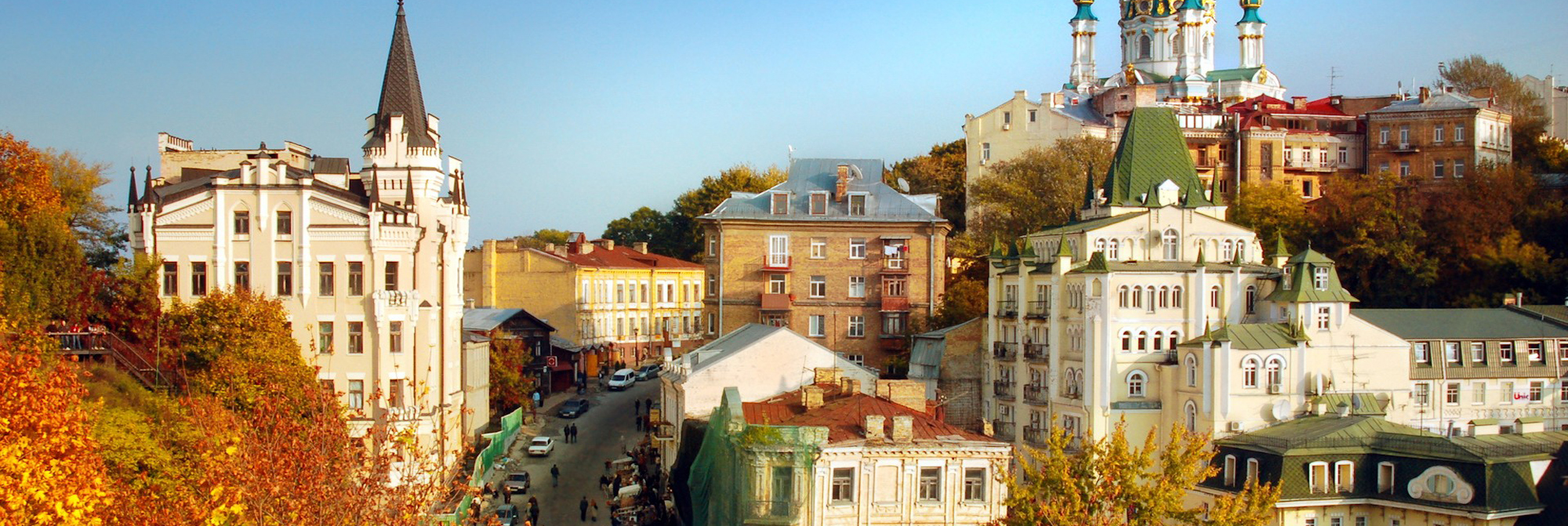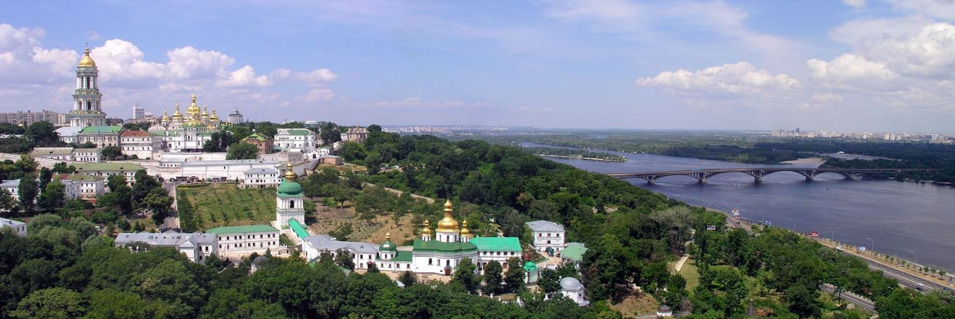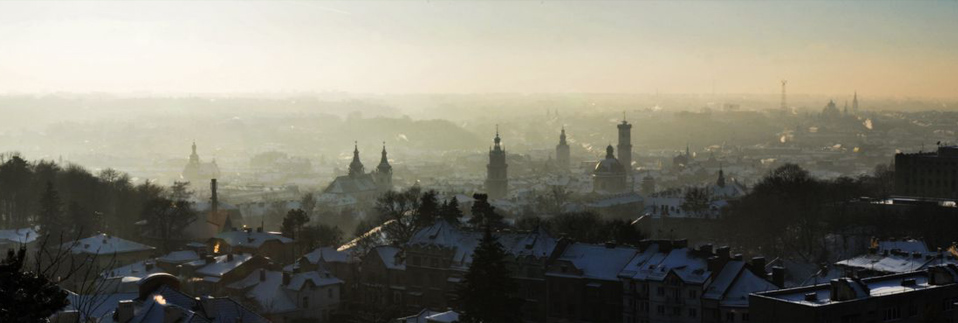Cherkassy
Cherkassy Region
The capital of Cherkassy region is the city of Cherkassy, its population is about 300 thousand. There are several explanations of the name, and one of them says that in many historical documents of the XVI-XVII centuries the two words “cherkassy” and “cossacks” had the same meaning “free horsemen”. And really - the whole history of the town is inseparable from the history of Ukrainian Cossacks.
For the first time the name of Cherkassy was found under the date of 1394 when it was already a well protected fortress on the territory subordinated to Lithuania. In the XV-XVI centuries the role of Cherkassy as a protecting stronghold against tartars and Turks greatly increased. Its castle that stood on the place of the Glory Hill was one of the strongest in this area. In the mid-XVII century the town became the central fort of the Cherkassy Cossack regiment and many important historical events took place here during the period of the liberation war of the Ukrainians against the Polish oppression in 1648-1654.
After the Russian-Polish war in 1667 Cherkassy again fell under the Polish rule, and from 1686 for 25 years it was announced as “no man’s” land where nobody could settle as a new-comer. In 1711 the Poles again possessed the town till the end of the XVIII c. In 1795 Cherkassy became part of Russian Empire.
At the beginning of the XIX c. the town grew along the river and it was often flooded in spring time. In 1815 the first general plan of the town was proposed to the citizens. In the first half of the XX c. Cherkassy looked like typical small provincial town.
During the WWII the town suffered sever damages especially when the Soviet troops took the offensive trying to cross the Dnieper and to liberate the right bank of the river that had been turned by the Germans into a strongly fortified defence line.
Not so much buildings of old style with interesting architectural elements one can find now in the city. In 1954 Cherkassy became the centre of a newly formed administrative region of Ukraine. It gave a new impact for its development. The life of the city was greatly influenced by the construction of an artificial lake for Kremenchug hydro-power station in the 1950-ies. The lower part of the city was covered with water and what was before on the hills looks now as rather flat land. Within the last 40 years the population of Cherkassy increased four times.
What are the first impressions of the city and what are its main highlights ?
Cherkassy impresses everybody with pleasant wide boulevards and scenic river vistas, most its central walkways are lined with chestnut trees. Not far from the central square is an elegant building of local Music and Drama Theatre. House of Books is worth to be visited not only because of the book collection but because of its interesting interior decoration in the best Ukrainian traditions. One must visit the Museum of local lore that houses 12,000 exhibits. Here you can find many interesting items about the heroic past of Cherkassy, among them the Diorama of an old town and its fortress. Among the attractions of the city there are the Cherkassy Art Museum, Monument to the legendary Old Rus bard Boyan in the 700th Anniversary of Cherkassy Square.
The history of Cherkassy is closely connected with the names of two great Ukrainians – Bogdan Khmelnitsky and Taras Shevchenko. The monuments to them are real masterpieces of art.
Everybody visiting Cherkassy can’t miss a visit of the Glory Hill with a an impressive Motherland monument The monument honours the men and women who lost their lives defending the city from the Nazi invasion. Their names are inscribed on a wall below the hill. The sight from the hill includes a majestic view of the river and the lovely Valley of Roses along the river.
Not far is the Church of the Holy Trinity. There is also a Roman-Catholic chapel. On August13, 2002, the biggest in Ukraine Orthodox St. Archangel Michael’s Cathedral that can house 12,000 people was unveiled. Not numerous but strong Jewish community is very active in the cultural life of the city.
While visiting Cherkassy one can take a side trip to Zolotonosha to visit a functioning nunnery. We cross the river along the longest on the Dnieper dam (15 km) , some more 15 km and a traveler is surrounded by tranquility that can be found only at the monasteries. It is the Theological Saviour Transfiguration convent organized in the XVII c. and it resumed its activity in 1991. Situated on a hill overlooking the peaceful countryside, the convent’s main church, the Transfiguration Church, was built in 1767-1771 in the Ukrainian baroque style by famous architect Grigorovych Barsky. It is a real architectural gem.
The old Ukrainian town of Kanev (population 26,000) overlooks the rolling waters of the mighty Dnieper from the right bank of the river whose steep slopes are luxuriant with greenery. Kanev combines the past and the present. It has endured many severe ordeals over its long history.
According to some archaeological evidences people lived here at the time of the Bronze Age. The remnants of three ancient settlements, a barrow and a hidden treasure of the X-XII centuries were found here. As early as the XII century, the town was one of the fortresses that defended the state of the Kievan Rus from the nomadic tribe’s raids. Kanev is first mentioned in chronicles dated the year of 1144, when Kiev Prince Vsevolod put a foundation stone of St. George’s church, later it got the name of Assumption Cathedral (“Dormition” ). The Cathedral is still among the highlights of the town.
The name “Kanev” has different explanations – “the khan’s ford” or “the town on blood” (in tartar language). After the invasion of Khan Batu in 1239-1240 the tartar-Mongols turned this town in the residence of their vicegerents. At the end of the XIV c. it fell under the rule of Lithuanian Principality (1362) and later under the rule of Poland (1569). Its residents took an active par in the struggle against the Lithuanian feudal lords throughout the XIV c. to the XVI c. century, and in the XVII c . - against the Polish gentry.
In the XVI c. Kanev was one of the Cossacks’ stronghold points. And no wonder that at the ebb of life old Cossacks loved to be settled here on Chernecha Hill (“Monastic”). In 1667 Kanev again fell under Polish rule. During the peasant-cossacks uprising “Koliyvshchyna” that started in the Cherkassy area in 1768 it was conquered by rebelling “gaidamaks”. In 1793 Kanev was included into the Russian Empire territory.
That is the town’s history in brief and it doesn’t differ much from the history of many other towns of Ukraine. But Kanev has a special destiny – its world-wide fame is connected with the name of famous Ukrainian poet, artist and democrat Taras Shevchenko (March 9, 1814-March 10, 1861).
He was born as a serf, all his ancestors suffered in serfdom. As a teenager, he was lucky enough to be noticed for his artistic talents and sent to St. Petersburg to study at the Fine Arts Academy. In 1845, upon graduation from the Academy, Taras Shevchenko returned to Ukraine to live and to work here as a painter. Working for an archaeological commission in Kiev he visited the most interesting sites of the country and made drawings of historical and architectural landmarks.
Shevchenko was not only a talented artist but a great poet. He wrote about an unbearable life of Ukrainian peasantry, glorified the heroic past of the Ukrainian cossacks. His poems appealed to people for a rebellion against Russian tsar Nickolas I. The punishment was inevitable and very cruel - he was arrested and exiled as a soldier for 10 years. And till his last days he was under the police supervision.
When he was away from Ukraine, he kept constantly thinking about his native land. Both his poetry and paintings reflect his ardent passion for Ukraine.
O my Ukraine,
Such a nice place,
Such a tranquil place,
What have you been so much befouled for,
What are you, my motherland, dying for?
In summer 1859, after a long absence, Shevchenko returned to Ukraine. He took a special interest in Kanev and its environs. This place has unique charm and all poetical and lofty words about Ukraine can be attributed to this land. Exhausted by his long exile, persecuted by gendarmes, he was dreaming of spending the last years of his life in this picturesque locality. On one of the hills he wanted to settle forever.
But his dream never came true. The poet soon had to leave for St. Petersburg where he died in 1861 some months before the serfdom in Russia was abolished.
Carrying out the last will of the Bard his friends reburied him near Kanev on Chernecha Hill which was renamed Taras Hill from then on. The coffin of Shevchenko was kept in the local Assumption Cathedral May 20-22, 1861 before the internment..
When I am dead, then bury me
In my beloved Ukraine,
My tomb upon a grave-mound high,
Amid the wide-spread plain,
So that the fields, the boundless steppes,
The Dnieper’s plunging shore
My eyes could see, my ears could hear
The mighty river roar.
The tsarist authorities continued to persecute Taras Shevchenko even after his death. On the poet’s birth centenary, they prohibited any public show of respect to his memory. However people never stopped going to his grave to pay tribute to the great Bard.
The museum was constructed in 1934-1937. Its 10 halls contain valuable exhibits which elucidate the poet’s life and creative activities, as well as numerous publications of his works, from those printed during his lifetime to those of today, and their translations into many foreign languages. In 1939 a big granite monument was put on a high pedestal over the mound. During the WWII the whole museum complex was barbarously ruined and defiled by the invaders.
To-day the Shevchenko museum is known throughout the world. And Kanev is recognized as a kind of a distinctive spiritual-mental centre for the Ukrainians and whole Ukraine.
Across the road that leads to the Museum of Shevchenko Kanev National Park is located. It is one of the oldest and the biggest nature reserves in the steppe area of Ukraine. It was founded in 1923, its territory to-day is more than 20 square kilometres and it numbers 974 unique and rare species of different plants. Its hills and numerous ravines, some of them are 40-70 metresdeep, are rich in archaeological and geological relics dating to palaeolithic era.
The oldest reference of Chigirin as a winter Cossack fort dates to the first half of the XVI c, thought the archaeological excavation prove the fact that in the XI-XIII cc there was an ancient Slavic settlement. Rather strange sounding name have different explanation: in Ukrainian “chagar” means “brush woods”, and it Turkish it means “road”. Not far from the Chigirin Mount (“Zamkovaya” – Fortress Mount or Stone Mount) there was an trade way from Kiev to Crimea that was used by the Tartars for their predatory raids. The mount was turned into unassailable fortress.
Special attention the fortress got from Bogdan Khmelnitsky when in 1648 he was elected the Hetman of Zaporozhian Cossack forces and Chigirin became not only the Hetman’s residence but practically the capital of this part of Ukraine that had been freed from the Polish rule. The town consisted of two parts – a fortress and a castle were located on a mount, and at its foot – the town itself surrounded by a 3-km wall and river Tiasmin. Here was the Hetman’s palace, some market squares, the Churches of Savior and of the Assumption of Virgin Mary. A Syrian traveler wrote in 1655: “The place where Khmel (Khmelnitsky) now constantly lives is called Chigirin. The citadel looks almost the same like the Syrian fortress Aleppo and it can be seen from a distance. We were invited to a wooden church that stands near the Hetman’s palace. The fortress is no equal to any other fortress in the Cossack country”. The guests were surprised by the fact that practically everybody in Chigirin including many women could read and write.
Foreign ambassadors were welcomed and sent-off with orchestra. In 1648-1654 the town was visited by delegations from Poland. Turkey, Sweden, Italy, Austria, Great Britain and from other countries. All documents had a final signature – “Given from the capital Chigirin”.
From here Bogdan Khmelnitsky assigned his first ambassador to Moscow. In January 1653 the Cossack foremen gathered in Chigirin to vote for continuation of the liberation war against the Poles and to seek for the final agreement from Moscow to join Ukraine with Russia. At that time it was the only one decision that could save Ukraine from the Polish oppression. In April Bogdan assigned his second mission to Moscow and in June he got Russian Tsar’s positive answer. In January 1654 Hetman accompanied by Cossack leaders left Chigirin for Pereyaslav were an agreement between Ukraine and Russia was signed on the 6th of January.
The death of Bogdan Khmelnitsky in 1657 inevitably resulted in the history of Ukraine and in its way changed the life to Chigirin. It lost its importance; the capital was moved to Baturin. In the next decade it was more than once attacked by the Turks, and finally in 1678 it was ruined by the invaders.
When Shevchenko visited this town in 1843 and 1845 it hardly resembled the former capital – typical poor village with a few old brick buildings and churches. Shevchenko worked a great deal on Bogdan Khmelnitsky’s image as an artist. His best works are “Death of Bogdan Khmelnitsky”, 1836-1837, and “Gifts in Chigirin in 1649”, 1844. Shevchenko worked a great deal on Bogdan Khmelnitsky’s image as an artist. His best works are “Death of Bogdan Khmelnitsky”, 1836-1837. and “Gifts in Chigirin in 1649”, 1844. His poetic works: ”Haidamaki”, “Princess”, ”The Great Cellar”, “Dream”, drama “Nazar Stodolya”, story “The Twins”
Impressive monument to Bogdan Khmelnitsky on the top of the former fortress mount was unveiled in 1967
Local lore museum is worth to visit, is exhibits one of the best collections of the Cossack items and helps a lot to understand the history of Ukraine and to comprehend the life of Hetman that was not only abounds in victories and glory but was full of disappointments, mistakes, betrayals and losses.
To-day Chigirin has a population of a little more than 10,000. Much attention is paid to the reconstruction of the former Hetman’s buildings and turning this place into a tourist Mecca.
This small village, only some 800 people live here, is located about 15 km to the West from Chigirin.This village was founded in 1616 by a small landowner Mikhail Khmel - father of the future Ukrainian Hetman Bogdan Zinoviy Khmelnitsky (1595-1657). Mikhail was killed in action in 1620 during the Polish-Turkish war of 1620-1621 in Tsetsorskaya battle. During this battle his son, future Hetman of Ukraine, Bogdan was captured and for two years he was imprisoned in Istanbul.
Upon returning home to his native village, Bogdan was busy in trying to revive the life of his farmstead and at the same time he took up a post of a registered Cossack lieutenant of Chigirin “century” (a military unit). He was one of the organizers of the audacious see raids to Turkey, participated in Polish-Russian wars on the Polish side (registered Cossacks were part of the Polish army) and he even got a gold sabre as a high appraisal of his personal courage from the Polish king Vladislav IV.
In 1647, Chigirin sub-headman Chaplinsky, who was Polish, and who was Bogdan’s old rival and always hatred him, attacked Subotov, robbed it, burnt the grain storage, heavily whipped Bogdan’s small son, captured his civil wife. Khmelnitsky lost all the trials when he intended to punish his offender, even the Polish king didn’t help him. Maybe it was the last straw and the same year Bogdan organized a big military detachment and moved to Zaporozhie where he began to prepare Cossack uprising. But before, together with his son Timofey, he visited the Crimean Khan Islam-Ghirey and asked him to render military support or at least to be neutral in the coming liberation war against the Poles. Bogdan Khmelnitsky returned to Zaporozhie and his sonTimofey was left in Crimea as a hostage. The Cossacks elected Bogdan their Hetman and it was the beginning of long and severe struggle against the Polish oppression.
In 1653 Bogdan Khmelnitsky ordered to built the church of St. Elijah in Subotov on the bank of the river Tiasmin. It was constructed as a burial vault temple. And in four years its founder was buried here on July 27, 1657. The church now houses the museum of Bogdan Khmelnitsky.
Subotov is associated with many famous events of the 1648-1654 liberation struggle of the Ukrainian people against the polish oppression. Like Chigirin, Subotov was the centre of Hetman’s power and diplomacy. “Done in Subotov” – such a signature on various documents was known in many European countries.
Shevchenko visited Subotov in 1843 and 1845. Not far from the village one can see three wells dug at the time of Khmelnitsky.
In this small village great Ukrainian poet, artist and democrat Taras Shevchenko (1814-1861) was born. A village that now numbers about 2,000 inhabitants, was known in the ancient times. The scientists discovered here a settlement of Cherniahov culture (II-VI cc) and the remnants of the ramparts of the Kievan Rus time. For the first time a written reference to this village can be found in the documents of the mid-XVII c.
In 1648 a military Cossack init of colonel Maxim Krivonos passed through the village. In 1658 it belonged to Polish magnate Vygovsky. 1793 – it belonged to Prince Potemkin, and then to general Engelgardt and his descendants.
Here, on March 9, 1814, a boy, named Taras, was born in the family of a serf-peasant Grigoriy Shevchenko.
At that time here lived 1347 people. Before the family lived in the village of Kirilovka and moved to Morintsy in 1810. There were already 4 children in the family when Taras was born. He came into the world in the house of his grandfather on his mother’s side (Yakim Boiko). Unfortunately this house has not survived and now we can see its reconstruction. When Taras was one year old the family returned to Kirilovka. During his work at the archaeological expedition he visited his birth place in 1843 and 1845 and then in 1859, two years before his death.
To learn more about the life of Shevchenko one is recommended to visit the village of Kirilovka (about three thousand inhabitants). In 1816 the family of Shevchenko returned here from Morintsy.
His father Grigoriy with his two sons Nikita and Taras were registered as serves of landowner Engelgardt and in March 1816 they were attached to the homestead of Ivan Shevchenko (grandfather) in Kirilovka. Here he spent his joyless childhood. Exhausted by hard work his mother died in 1823, his father married a woman with three children, the step-mother was cruel and hated Taras. In two years father died. The poet remembered his bitter childhood of an orphan with a heavy heart:
In that same village to her grave
My gentle mother, young in tears,
Was laid by toil and want and cares.
There father weeping with his brood
(We were but tiny, tattered tots),
Could not withstand his bitter lot
And died at work in servitude!..
Here, thirteen-year-old Taras “herded lambs beyond the village”. From here, burning with an irresistible desire to paint he went to neighbouring villages in search of a teacher of painting. His father believed in a special fate of Taras son and wanted him to make his way in life and that is why he sent the boy to study under a village sexton in autumn 1822.
Fate parted Shevchenko from the village of his childhood for a long time. Later he visited the village three times – in 1843, 1845 and 1859. However painful were his memories, he retained a love for his native home forever in his heart. The life of his native village was described in his poems and reflected in his drawings.
In the former homestead of Shevchenko’s parents, a memorial museum was opened in 1939. The house where Taras studied has been preserved. To better protect this building that was constructed in 1720 a protective pavilion has been built around it. Near the sexton’s house there are homesteads of the poet’s grandfather, his sister Yarina and his brother Yosip. One can also see the graves of his parents. In 1957 a monument to Shevchenko was erected on the central square of the village.
For the lovers of military history a visit to this old town on the picturesque banks of the river Ros will be very of big interest.
Now walking along the shady streets of this typical small provincial town with the population of 19,000 it is difficult to imagine that it is a town of battle glory. Its history is lost in remote past - ancient settlements of Tripilian culture, of Bronze age, of Scythians were found here, as well as the remnants of the so-called “serpentine” earth ramparts still attract archaeologists and historians.
In 1032 a fortress “Korsun” was built by Great Kiev Prince Yaroslav the Wise. The name was given by the priests in honour of the Crimean town Korsun (Chersonesus). It was a mighty stronghold in the path of the steppe nomads during the times of Kievan Rus. But in 1240 the fortress was destroyed by tartar-Mongols, and only in the XV-XVI cc the run-away serf - peasants settled in this area. In 1584 as a part of Rech Pospolita it got the Magdeburg Law rights.
In May 1648, in the famous battle of Korsun, peasant-and-Cossack troops headed by Khmelnitsky inflicted utter defeat to the detachments of Polish Hetmans Pototsky and Kalinovsky – both were captured together with the rest 9,000 Poles. The town was the centre of bloody events during the Koliyvschina uprising as well.
The most glorious chapter in the chronicle of feats of arms was inscribed, however, in the years of the Great Patriotic War of 1941-1945, when in January-February 1944 Soviet troops uniting the forces of the 1-st and the 2-nd Ukrainian fronts encircled 10 German divisions and one motor-brigade with almost 100,000 men in the vicinity of Korsun. The Germans lost 55,000 soldiers and officers, 18,200 were captured as war prisoners. The battle was called “the second Stalingrad”. Marshal of the Soviet Union Konev, Twice Hero of the Soviet Union, who had conducted the combat operations in the Battle of Smolensk, the Battle of Moscow, and the Battle of Kursk was at the head of the battle in Korsun-Shevchenkovsk. Those unforgettable events are elucidated by the exhibits in the museum of the Korsun-Shevchenkovsky Battle located in the former Lopuhin’s palace.
In May 1944 the town got its new name of Korsun-Shevchenkovsky.
This small town (15,000 inhabitants) n the XVII c. by run-a-way serf-peasants who settled here on the free lands on the rocky banks of the Tiasmin river. From these rocks originates the name of this place.
Under this name this place was found in the documents of 1649 as a hereditary estate of Bogdan Khmelnitsky. For a certain periods it belonged to Prince Grigoriy Potemkin.
Kamenka is associated with the names of the Decembrists, first revolutionaries among the nobles, members of secret societies whose activities led to the uprising of December, 1825, against Tsar Nickolas I. Under the influence of Napoleon’s ideas they advocated the establishment of representative democracy but disagreed on the form it should take; some favoured a constitutional monarchy, while others supported a democratic republic. Nickolas I firmly crushed the revolt and was recognized as undisputed ruler of the Russian Empire. The Decembrists of The Southern Society gathered here, in Kamenka, in the manor of Vladimir Davydov.
In 1820 and in 1822 Alexandre Pushkin came to Kamenka several times to stay with the Davydovs. In Kamenka he wrote several of his lyrical masterpieces. Davydov was exiled to Siberia for the term of 20 years and he died in 1855 in Krasnoyarsk area.
The name of another great Russian is everywhere in Kamenka – the name of the most prominent and distinguished Russian composers in history is famous throughout the world, Pyotr Chaikovsky (1840-1893). However, there are only a few people who know that the life and creative work of composer was connected with Ukraine. He had Ukrainian roots, His grandfather Fyodor Chaika ("seagull") was a Cossack of the Mirgorod regiment.
Chaikovsky always longed to visit the land of his ancestors. The composer often gave concerts in Kiev, Kharkov and Odessa. Each concert was a big success. In Kiev Chaikovsky got acquainted with the famous Ukrainian composer Nickolai Lysenko. First the composer came to Kamenka in 1865 to visit his sister Alexandra who married the son of Decembrist Davydov and after this he stayed here many times. In one of his letters he wrote: «I really like it here. I feel peace here like nowhere in Moscow or St. Petersburg”. In a word, Kamyanka became Chaikovsky’s second home. At least 30 of his musical compositions were based on Ukrainian topics or include Ukrainian folk melodies. Living in Kamyanka Chaikovsky attended to Ukrainian songs and tried to catch the charm and style of these songs. Chaikovsky composed many of his compositions in Ukraine: Symphony No.3, The Concerto for Piano and Orchestra No.1 and No.2, “The Oprichnik”, “Eugene Onegin”, and “Swan Lake”.
Some of his musical compositions are devoted to Ukraine. These include his operas – “Mazepa” based on the poem of Pushkin “Poltava”, “the Little Shoes” based on the Gogol’s novel “Night before Christmas”. Small but very touching museum has the atmosphere of old Kamenka and helps to understand those great people who lived and worked here.
Almost in the middle of the highway Kiev – Odessa (210 km) there is a small and quiet town of Uman (87,700 inhabitants). Its long history is very rich but, unfortunately, these interesting facts are not well known to wide public. And, nevertheless, the name of Uman is known not only in Ukraine. And this is explained in two ways.
The first – its famous landscape park "Sofievka” that was laid out in 1791 by Count S.Pototski, the landlord of numerous estates in Ukraine, and named in honour of his wife Sophia. It was constructed under the design of talented Belgian military engineer L.Metzel, by thousands of local serfs, who managed to create one of the most unique parks in Europe. The wonderful landscapes, numerous sprinkling fountains, artificial grottoes, exquisite antique sculptures and pavilions fascinate the visitors. The constructors created a sophisticated hydraulic system supplying water to the Upper and Lower park ponds, all its sites and areas. The people of all times admired by the park which equalled in many respects the ancient parks of Florence, Potsdam and Versailles. It is beautiful all year round, but nothing can be compared with a visit here in early autumn.
In 1845 Uman was visited by Shevchenko. This visit inspired him to write one of his most famous poems “Haidamaki”, in which he glorified the heroes of peasant-Cossack uprising Koliyvschina in the mid-XVIII c. Gonta and Zaliznyak. It was one of the biggest and longest uprisings that was directed against Polish rule, Catholicism and against anybody who was richer and different that the insurgents. This general slaughter took away the lives of thousands of Jews who were blamed in living in concord with the Polish authorities and prayed a different God. And Uman became one of the biggest Jewish communal grave.
Chassidic Zaddick (a teacher and inspirational leader) Rebe Nachman from Bratslav (1772-1810) spent his last years in Uman. He suffered from tuberculosis and having a presentiment about his death Rebe wanted to be buried near those innocent victims killed by the gaidamaks. Since the day of Nachman’s death Uman his gravesite has become is a place of non-stopping pilgrimage of Chassidim. And that is the second explanation of the fame of Uman.


